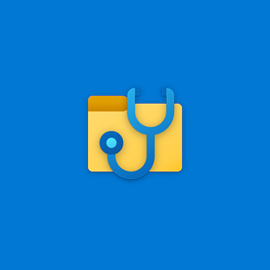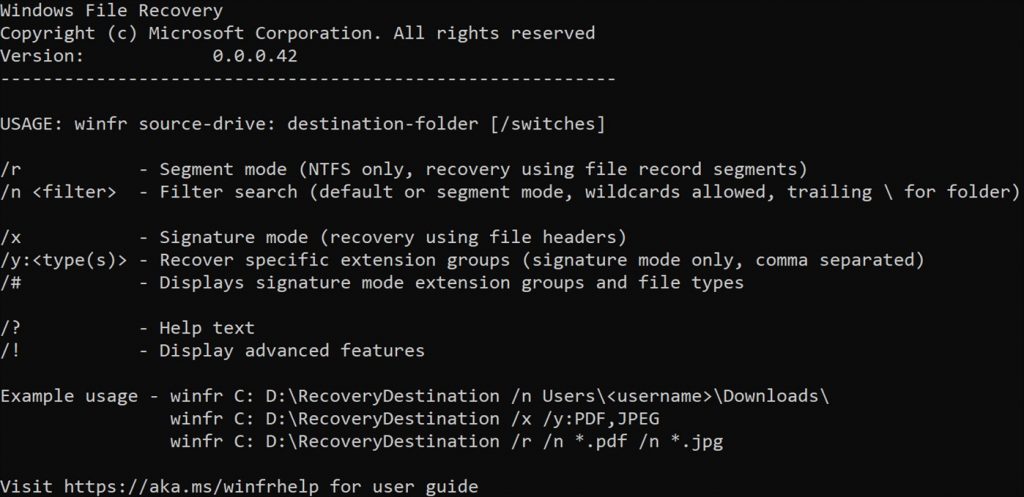Updated July 2024: Stop getting error messages and slow down your system with our optimization tool. Get it now at this link
- Download and install the repair tool here.
- Let it scan your computer.
- The tool will then repair your computer.
Microsoft launches its own Windows file recovery tool to help you recover files that you have accidentally deleted. Windows File Recovery is a command line application that can recover a wide variety of files and documents from local hard drives, USB drives and even camera SD cards. However, it does not support file recovery from cloud storage or network file sharing.

It is a Win32 command line application described as a solution for recovering personal data that has been accidentally erased, perhaps when a hard drive is erased. It can recover most file types, with Microsoft listing JPEG, PDF, PNG, MPEG, Office, MP3, MP4 and ZIP files, but it also adds “and more”. It works with hard drives, solid-state disks and memory cards, including support for NTFS, FAT, exFat and ReFS file systems. So it covers most configurations in which Windows 10 would run.
Windows File Recovery App Requirements
In order to use the Windows File Recovery Tool, you need to meet a few requirements.
July 2024 Update:
You can now prevent PC problems by using this tool, such as protecting you against file loss and malware. Additionally, it is a great way to optimize your computer for maximum performance. The program fixes common errors that might occur on Windows systems with ease - no need for hours of troubleshooting when you have the perfect solution at your fingertips:
- Step 1 : Download PC Repair & Optimizer Tool (Windows 10, 8, 7, XP, Vista – Microsoft Gold Certified).
- Step 2 : Click “Start Scan” to find Windows registry issues that could be causing PC problems.
- Step 3 : Click “Repair All” to fix all issues.
- You must be using Windows 10, version 2004 (build 19041) or later.
- You can download the Windows File Recovery Tool from the Microsoft Store.
- The source and destination drives must be different. If you do not have a second drive on your computer, you can use a USB drive as the recovery destination. If you are recording from an SD card or external drive, you can use the system’s internal drive (often the C: drive) as the destination.
- The tool supports various file systems such as NTFS, ReFS, FAT and exFAT. If you are restoring files from a non-NTFS file system, you must run the commands in signature mode with the /x parameter.

How to Use Windows File Recovery App
The three modes available in Windows File Recovery are Standard, Segment, and Signature.
Only the Signature mode allows files to be recovered from non-NTFS file systems, such as FAT and exFAT for SD cards and USB drives or ReFS for Windows Server and Windows Pro for workstations.
Default mode uses the Master File Table (MFT) to recover lost files. “Standard mode works well when the MFT and file segments, also called File Record Segments (FRS), are present,” explains Microsoft.
Segment mode does not require MFT, but it does require segments. “Segments are summaries of the file information that NTFS stores in the MFT, such as the name, date, size, type and index of allocation units/class,” he says.
The signature mode requires only the existence of the data and searches for specific file types. “It doesn’t work for small files. To restore a file to an external storage device, such as a USB stick, you can only use signature mode,” says the accompanying note.
Conclusion
For more information about using the tool, how it works, and the files it can recover, see the Microsoft support page. You can download Windows File Recovery free of charge from the Microsoft Store, a link to which is provided below. Just make sure you are using Windows 10 2004 or later to install the application.
Expert Tip: This repair tool scans the repositories and replaces corrupt or missing files if none of these methods have worked. It works well in most cases where the problem is due to system corruption. This tool will also optimize your system to maximize performance. It can be downloaded by Clicking Here
